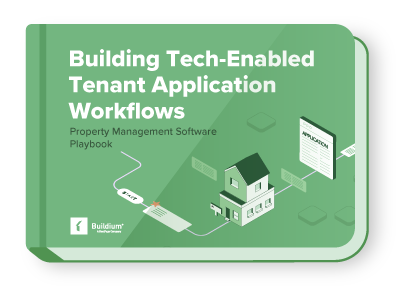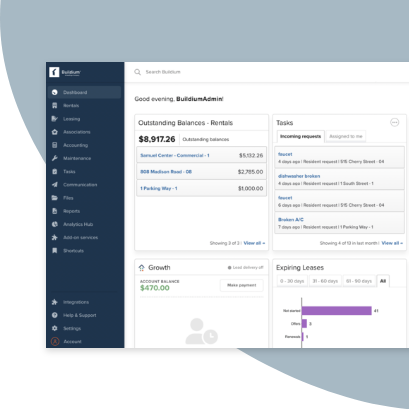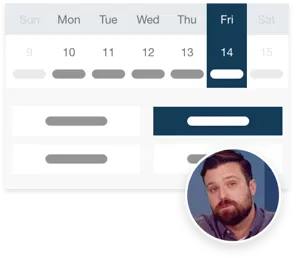Disclaimer: This blog post is meant for informational purposes only and does not constitute legal advice. Consult with a licensed attorney in Vermont for specific legal guidance.
Creating and managing lease agreements in Vermont requires understanding state-specific laws, best practices, and the rights of all parties involved.
This guide breaks down the key elements of Vermont Lease Agreements and offers practical advice to help you comply with regulations, avoid legal issues, and maintain strong landlord-tenant relationships. Whether you’re an experienced property manager or a new landlord, this resource will serve as your go-to reference for residential lease agreements in Vermont.
Be sure to also download Buildium’s free Vermont lease agreement template using the button above to get started with your own agreement.
What Is a Vermont Lease Agreement?
A Vermont lease agreement is a legal contract between a landlord (or property manager) and a tenant. It outlines the terms and conditions for renting a residential property and defines the rights and obligations of both parties.
A Vermont lease agreement protects both the landlord and tenant by clearly outlining expectations, payment terms, property usage, and other legal responsibilities. It serves as a reference if disputes or issues arise during the tenancy.
As a legal document, a Vermont lease agreement helps prevent misunderstandings and conflicts, supporting a transparent rental relationship.
Who Needs a Vermont Lease Agreement?
Every property manager, landlord, or tenant involved in renting residential property in Vermont needs a Vermont lease agreement. Without a formal written lease, both parties risk legal complications and confusion.
Specifically:
- Lease agreements for terms longer than a year must be in writing: Vermont law mandates that leases lasting more than one year be documented in writing. Although verbal agreements may be valid for leases shorter than one year, having a written lease avoids misunderstandings and strengthens enforceability.
- Risks of not having a lease agreement: Without a formal lease, landlords may struggle to enforce rules or resolve disputes. Tenants may also face uncertainty about their rights, including rent payments, property repairs, or lease termination.
A well-drafted lease agreement minimizes these risks and provides added clarity for both property managers and tenants.
Types of Vermont Lease Agreements
Several types of lease agreements exist in Vermont, each serving different purposes. Understanding these options helps property managers choose the right one for their needs.
1. Fixed-Term Lease Agreement
This common lease type applies to long-term rentals of single-family homes, apartments, or multifamily units. It covers the basic rental relationship, including rent amount, lease duration, and tenant obligations.
2. Month-to-Month Lease Agreement
This lease type gives tenants flexibility by allowing either party to terminate the agreement with notice (typically 30 days). Month-to-month leases work well for short-term or transitional housing.
3. Sublease Agreement
A sublease agreement enables a tenant to rent the property or a part of it to another person while maintaining responsibility to the original landlord. This type of lease suits tenants who need to vacate temporarily.
4. Roommate Agreement
When tenants share a rental property, a roommate agreement helps establish responsibilities, including rent payments, chores, and shared space usage. This agreement prevents disputes between tenants and sets clear expectations.
What Should a Vermont Lease Agreement Include?
A well-constructed Vermont lease agreement should be thorough, clear, and specific. The following components are necessary:
Parties Involved
Clearly identify the landlord, tenant, and any other responsible parties. Include contact information for each person, such as names, phone numbers, and mailing addresses.
Lease Duration Dates
State the start and end dates of the lease. For month-to-month agreements, outline renewal terms and notice periods for termination. Specify the rent amount, due date, payment methods, and any penalties for late payments.
Rent and Security Deposit Information
Detail rent collection procedures, including the amount, due date, and payment methods. Also, address security deposits, explaining the amount, holding procedures, and conditions for refund. Follow Vermont’s laws for security deposit handling, including deductions (more on that later).
Occupancy Limits
Specify the maximum number of occupants allowed in the rental property. This prevents overcrowding and ensures compliance with health and safety codes. Landlords may enforce these limits to maintain the property’s condition.
Property Management & Tenant Responsibilities
Outline both the landlord’s and tenant’s responsibilities, including maintenance and repair obligations. Landlords must provide a habitable property, and tenants must maintain cleanliness and report necessary repairs.
Pet Policies
If pets are allowed, state the pet policy. Outline restrictions on pet types, breed, and size. Indicate whether a pet deposit or additional pet rent applies. Pet-related rules prevent damage or disturbances.
Vermont Lease Agreement Addenda and Disclosures
Vermont law requires certain disclosures and addenda to promote transparency and tenant safety. This list is not exhaustive, so consult a legal professional if you’re unsure about what to include in your own agreements.
Lead-Based Paint Disclosure
For properties built before 1978, federal law requires landlords to provide a lead-based paint disclosure. This disclosure helps prevent lead poisoning, especially for households with young children.
Flood Zone Area Disclosure
Vermont law mandates that landlords disclose whether the rental property is located in a flood zone. If the property is in a FEMA-designated flood zone, landlords must inform tenants about flood risks.
Optional Disclosures & Addenda
Landlords may choose to include additional disclosures, such as those regarding mold, asbestos, bed bugs, and smoking policies. These addenda help prevent legal disputes and promote tenant safety.
Consequences for Not Including Mandatory Disclosures
Failing to include required disclosures can result in unenforceable provisions or fines. For example, if a lead-based paint disclosure is missing, the tenant may cancel the lease or pursue legal action for damages.
Vermont Lease Agreement Laws and Regulations
Vermont has specific laws governing lease agreements to ensure fairness and protect both parties. Again, it’s always recommended to speak with a local legal professional for the most complete and detailed list of regulations.
Security Deposits
Under Vermont law, landlords must return security deposits within 14 days of lease termination. If deductions are made for damages or unpaid rent, landlords must provide an itemized list. Failure to comply may lead to double damages for the tenant.
Right of Entry
Landlords must give tenants 48 hours’ notice before entering the rental property, except in emergencies. This notice respects the tenant’s right to privacy and their ability to enjoy the property.
Grace Period
Vermont law does not mandate a grace period for rent payments. Rent is due on the specified due date, and landlords may charge late fees immediately after the due date.
Late Fees
Vermont law states that landlord charge a late fee of not more than $20.00 or 20 percent of a rental payment, whichever is greater.
Taking the Next Steps with Your Vermont Lease Agreement
A well-crafted Vermont lease agreement helps protect both landlords and tenants by establishing clear expectations and legal compliance. Understanding the key components, legal disclosures, and Vermont-specific regulations minimizes risk and fosters good landlord-tenant relationships.
Download Buildium’s free Vermont lease agreement template to start creating a legally sound lease for your rental properties.
For even more support, consider testing out Buildium’s comprehensive property management software. You can give it a try with a 14-day free trial or by signing up for a guided demo.


